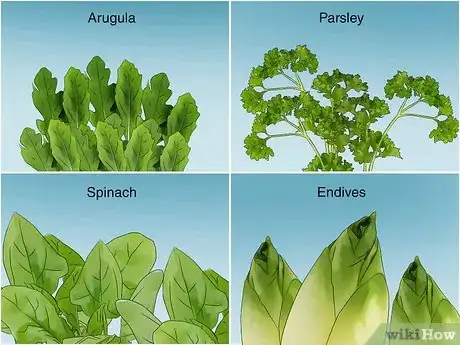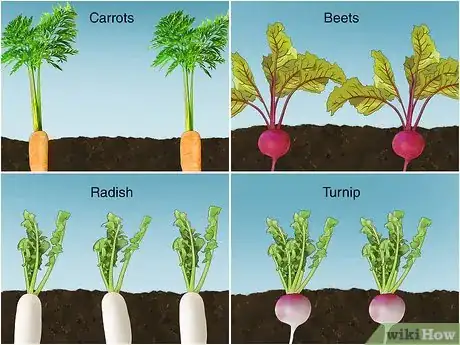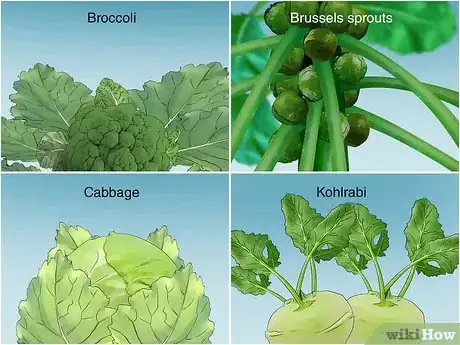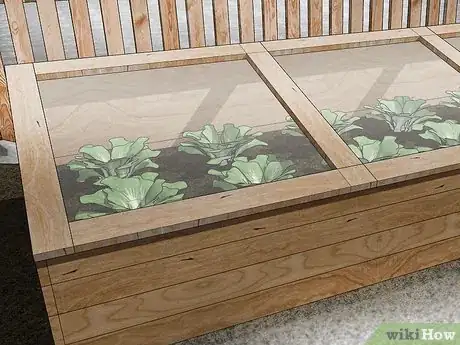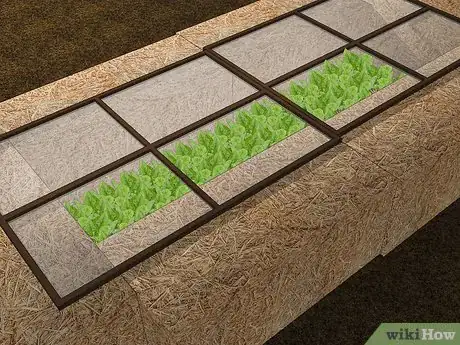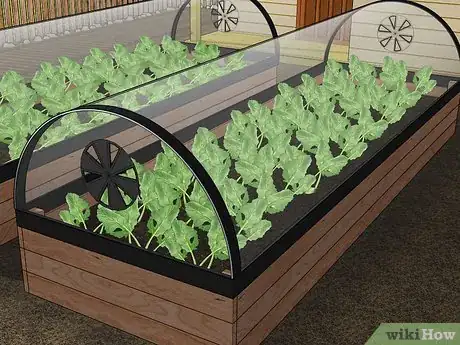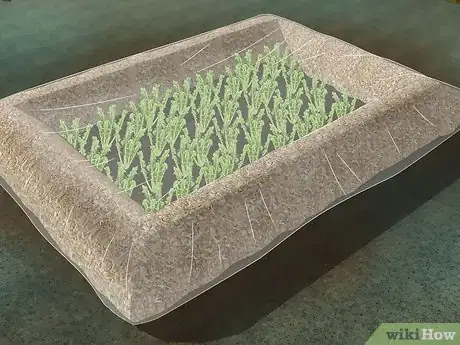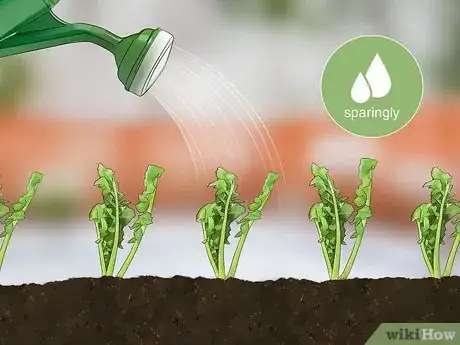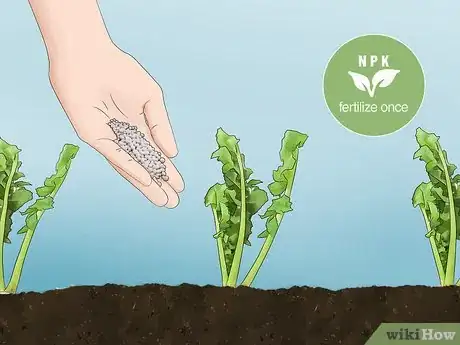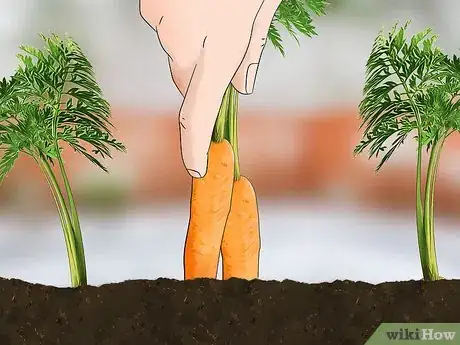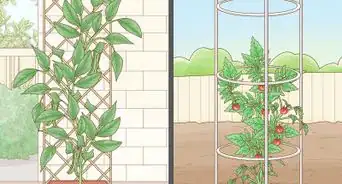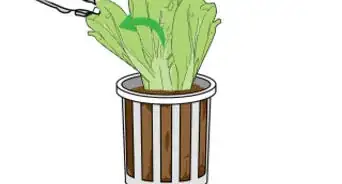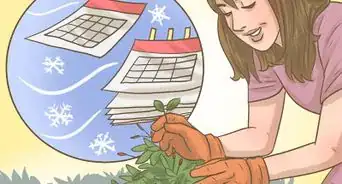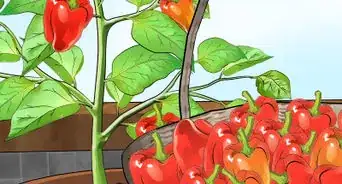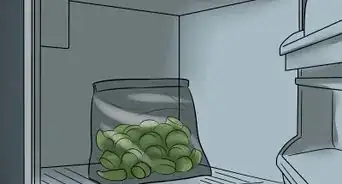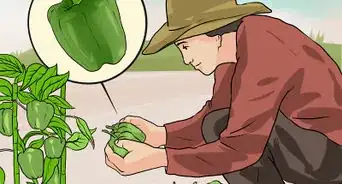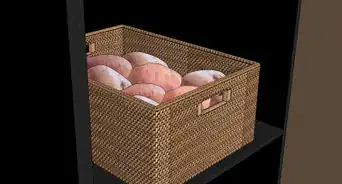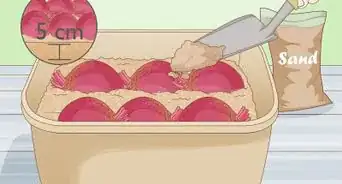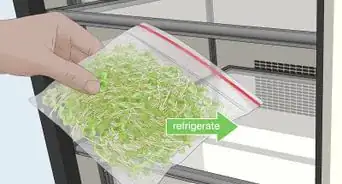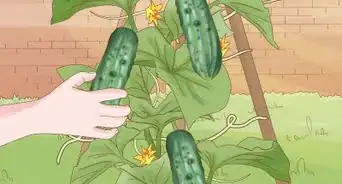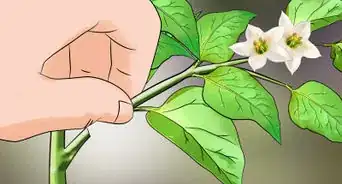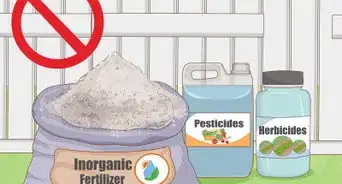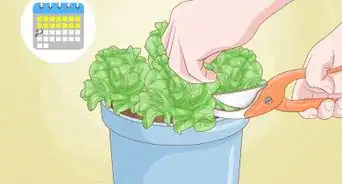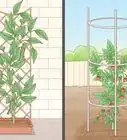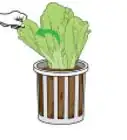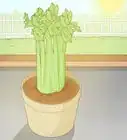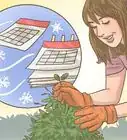This article was co-authored by Maggie Moran and by wikiHow staff writer, Kyle Hall. Maggie Moran is a Professional Gardener in Pennsylvania.
wikiHow marks an article as reader-approved once it receives enough positive feedback. In this case, several readers have written to tell us that this article was helpful to them, earning it our reader-approved status.
This article has been viewed 124,935 times.
Cold winter weather doesn't mean your vegetable garden has to be empty. In fact, vegetable gardening in the winter can be more laid-back than in warmer months since you don't have as much to tend to. The key to successful winter gardening is planting hardy vegetables that are tolerant of the cold. Fortunately, there are lots of vegetables you can choose from for your winter garden.
Steps
Planting Hardy Vegetables
-
1
-
2Plant root vegetables to harvest throughout winter. Like leafy greens, root vegetables are able to withstand winter weather conditions with enough protection. Plant root vegetables directly in the ground in late summer or early fall for a winter harvest. Some roots vegetables you can add to your winter garden are:[2]Advertisement
-
3Try growing brassicas in your winter garden. To grow brassicas in winter, plant them in an outdoor seedbed in late spring or early summer. You can also start them indoors in seed trays or pots. If you start your brassicas indoors, transfer them into the ground outside once they grow into seedlings with a few sets of leaves. Some popular brassicas you can grow over the winter are:[3]
Protecting Vegetables from the Cold
-
1Install a shelter to cover your vegetables before the first frost. To keep your vegetables safe from cold and freezing temperatures, you'll need to insulate them with some kind of shelter. Whichever kind of shelter you use, make sure you put it up before the first frost. Otherwise, your vegetables may be damaged from the cold.[4]
- One kind of shelter you can use is a mini tunnel that goes over your vegetables. You can find a mini tunnel at your local gardening center, or you can make your own using metal hoops and a row cover.[5]
- Not sure when your first frost is? Look online to find the average first frost date for your area.
-
2Build straw-bale cold frames to protect leafy greens and brassicas. Straw-bale cold frames are shelters made with straw bales that help insulate plants from the cold. To make your frames, surround your garden beds with straw bales so they’re closed off. Then, lay an old door, window, or piece of polycarbonate over the top of the bales or straw to seal the frame.[6]
- To harvest the vegetables in your cold frames, just lift the top and pull out the vegetables inside.
-
3Use cloches to shelter greens and brassicas as an alternative to a frame. Cloches are plastic covers that can be placed over plants. You can cover small vegetables with store-bought cloches, or you can make your own for larger garden beds. To make your own cloches, surround your vegetables with posts and slide a plastic garbage bag over them.[7]
-
4Lay down a thick layer of mulch to protect root vegetables from the cold. Before the first frost, cover the ground around your root vegetables with 1–2 feet (0.30–0.61 m) of mulch. Then, lay a sheet or gardening row cover over the mulch and root vegetables to trap in the warmth.[8]
- Popular types of mulch you can use are shredded leaves, shredded straw, and shredded bark.
- When you’re ready to harvest your root vegetables, you can just lift up the sheet or row cover and dig them out of the ground.
Caring for Your Vegetables
-
1Water your winter vegetables sparingly. Winter vegetables don’t need as much water because of the moisture they get from winter rain and snow. Also, since there’s less sunlight during the winter, the soil doesn’t dry out as quickly. Water your vegetables occasionally if you’re experiencing a winter dry spell, or if the soil they’re in is particularly dry.[9]
- Avoid watering your vegetables when it's below 40 °F (4 °C). If you live somewhere that has freezing temperatures all winter, make sure you thoroughly water your vegetables in the fall before winter starts.[10]
-
2Give your winter vegetables just one application of fertilizer. Winter vegetables don't need regular applications of fertilizer to grow. Instead, apply a fertilizer to the soil when you're planting your vegetables and then avoid adding any more for the rest of the winter. Your vegetables will be able to survive the winter off of the initial application.[11]
- Some organic fertilizers you can use are blood meal, bone meal, and cottonseed meal.
-
3Harvest your vegetables throughout the winter. The right time to harvest your winter vegetables depends on what kind they are and when you planted them. Check on your vegetables regularly and harvest them from their winter shelters so they don’t spoil.
- Root vegetables like carrots, radishes, and beets can be harvested whenever they reach a usable size.
- Harvest leafy greens when the leaves are small or medium-sized and tender. Don’t let them grow too large or they could develop a bitter taste.[12]
- Brassicas can take 10-14 weeks to mature, depending on the vegetable and variety.
Expert Q&A
Did you know you can get expert answers for this article?
Unlock expert answers by supporting wikiHow
-
QuestionWhat vegetables can you grow indoors in the winter?
 Maggie MoranMaggie Moran is a Professional Gardener in Pennsylvania.
Maggie MoranMaggie Moran is a Professional Gardener in Pennsylvania.
Home & Garden Specialist
-
QuestionCan I grow vegetables in a greenhouse in the winter?
 Maggie MoranMaggie Moran is a Professional Gardener in Pennsylvania.
Maggie MoranMaggie Moran is a Professional Gardener in Pennsylvania.
Home & Garden Specialist
-
QuestionWhat kind of vegetables grow in the winter?
 Maggie MoranMaggie Moran is a Professional Gardener in Pennsylvania.
Maggie MoranMaggie Moran is a Professional Gardener in Pennsylvania.
Home & Garden Specialist
References
- ↑ https://www.rhs.org.uk/advice/profile?PID=707
- ↑ https://www.rhs.org.uk/advice/profile?PID=707
- ↑ https://www.rhs.org.uk/advice/profile?PID=707
- ↑ https://www.rhs.org.uk/advice/profile?PID=707
- ↑ https://savvygardening.com/grow-fresh-vegetables-in-winter/
- ↑ https://savvygardening.com/grow-fresh-vegetables-in-winter/
- ↑ https://savvygardening.com/grow-fresh-vegetables-in-winter/
- ↑ https://savvygardening.com/grow-fresh-vegetables-in-winter/
- ↑ https://garden.org/learn/articles/view/274/
